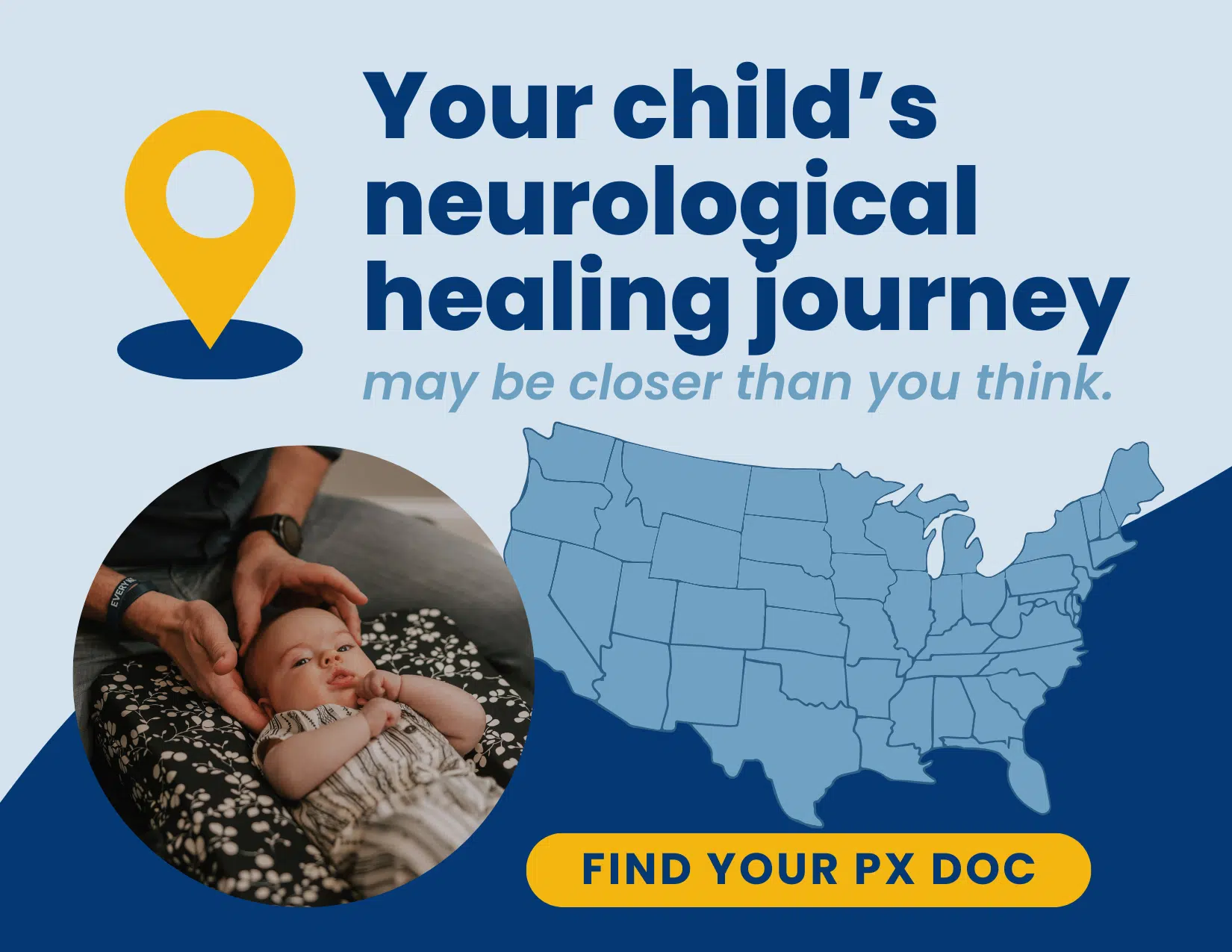As a parent, you’ve likely experienced the ups and downs of your child’s emotional journey. Perhaps you’ve witnessed your toddler’s intense tantrums or your school-aged child’s struggles with regulating their feelings. You may have wondered if these challenges are a normal part of development or if there’s something more going on beneath the surface.
Parents often have an incredible intuition about their child’s well-being — that gut feeling that something deeper is happening beneath the behaviors. Maybe it’s when small frustrations lead to big meltdowns, or when transitions that seem simple for other kids feel overwhelming for them. That inner sense that your child’s reactions are more than “just a phase” is often right, and it’s worth listening to. In many cases, these intense responses are signs that the nervous system is under more stress than it can comfortably handle.
Approximately 17% of children have some form of emotional or social delay. The truth is, emotional development is a complex process that is deeply rooted in a child’s neurological well-being.
From the earliest moments of life, the developing nervous system lays the foundation for a child’s ability to understand, express, and manage their emotions. When this delicate system is disrupted, emotional challenges can arise, affecting a child’s social relationships, academic success, and overall happiness.
In this article, we’ll explore emotional development through a neurological lens. We’ll uncover the key developmental milestones of emotional growth, the factors that can influence a child’s emotional health, and the powerful role that Neurologically-Focused Chiropractic Care can play in supporting a child’s emotional well-being.
By understanding the intricate connection between the nervous system and emotional development, parents can take proactive steps to help their children thrive emotionally, laying the foundation for a lifetime of resilience and success.
What is Emotional Development in Early Childhood?
Emotional development is the evolution of a child’s ability to understand, express, and manage emotions from birth. This process is linked to cognitive, social, and neural growth within the context of relationships and experiences. As children grow, they reach key emotional milestones, although the timing of these milestones can vary. Recognizing these patterns can help parents support their child’s emotional development and growth.
Infancy (Birth to 12 months):
- Expresses basic emotions such as happiness, sadness, anger, and fear
- Engages in social smiling and laughing
- Develops attachment to primary caregivers
- Seeks comfort from caregivers when distressed
Early Childhood (1 to 3 years):
- Begins to label and talk about emotions
- Develops self-conscious emotions such as pride, shame, and guilt
- Engages in pretend play, exploring emotions in new ways
- Starts to understand and respond to others’ emotions
Middle Childhood (4 to 11 years):
- Develops a more complex understanding of emotions
- Improves ability to regulate emotions
- Learns social norms for expressing emotions
- Develops empathy and understanding of others’ perspectives
Adolescence (12 to 18 years):
- Experiences more intense and frequent emotions
- Develops a stronger sense of self and identity
- Navigates complex social relationships and emotions
- Continues to refine emotional regulation skills
Throughout these stages, children’s social and emotional development is shaped by their experiences, relationships, and the neurological changes occurring in their brains. By understanding these milestones, parents can better support their child’s emotional development, fostering the skills and resilience necessary for healthy emotional functioning.
The Neurological Basis of Emotional Development
Beneath the surface of child development and emotional experiences lies a complex network of over 1 million neural connections that are formed every second, shaping their ability to process, express, and regulate emotions. Understanding the neurological underpinnings of emotional development can provide valuable insights into how to support a child’s emotional well-being.
At the heart of emotional development are several key brain regions:
- The amygdala plays a central role in detecting and responding to emotional stimuli, particularly those related to fear and anxiety.
- The prefrontal cortex helps regulate emotions and guides decision-making and social behavior.
- The hippocampus is involved in forming emotional memories and processing the context of emotional experiences.
These regions work together with the Autonomic Nervous System (ANS) to coordinate emotional responses. The ANS is divided into two branches: the Sympathetic Nervous System, which activates the “fight or flight” response, and the Parasympathetic Nervous System, which promotes “rest, regulate, and digest” functions and helps regulate emotional states.
The vagus nerve, a key component of the Parasympathetic Nervous System, plays a crucial role in regulating emotional responses and social engagement. When the vagus nerve is functioning optimally, it helps promote feelings of safety and connection, allowing children to engage in social interactions and regulate their emotions effectively.
But when the nervous system is under stress, a child’s emotional development can be greatly affected. One of the main sources of this stress is subluxation — a disruption within the neurospinal system that alters how the nervous system functions and regulates the body. Subluxation can lead to dysautonomia, an imbalance within the autonomic nervous system that affects key functions such as heart rate, digestion, and emotional regulation.
Adverse childhood experiences (ACEs), including abuse, neglect, and household dysfunction, have been shown to affect a child’s developing brain. Additionally, exposure to chronic stress and trauma can lead to emotional difficulties that may continue into adulthood.
By understanding the neurological basis of emotional development, parents and caregivers can be better equipped to recognize and address potential disruptions to a child’s emotional well-being.
The “Perfect Storm” Concept
In the context of emotional development, the “Perfect Storm” refers to a combination of early life stressors that can disrupt a child’s nervous system development, setting the stage for emotional development challenges later in life. Just as a meteorological “Perfect Storm” arises from a rare combination of factors, the “Perfect Storm” in a child’s life occurs when multiple stressors converge during critical periods of development.
The components of the “Perfect Storm” can include:
- Prenatal stress and maternal emotional health: Studies have found that when a mother experiences high levels of stress, anxiety, or depression during pregnancy, it can increase the risk of neurodevelopmental conditions in the fetus. Stress hormones, such as cortisol, can cross the placenta and alter the development of key brain regions involved in emotional processing, including the amygdala and hippocampus.
- Birth trauma and interventions: Difficult or traumatic births, often involving interventions such as forceps, vacuum extraction, or cesarean section, can cause physical stress and injury to a baby’s delicate brainstem and nervous system. This birth trauma can lead to subluxation, which can interfere with the healthy communication of the nervous system and impact emotional regulation.
- Early childhood stressors: In the first few years of life, a child’s nervous system is highly sensitive to environmental stressors. Chronic illnesses, frequent antibiotic use, poor nutrition, and exposure to toxins can all contribute to a state of chronic stress that disrupts healthy nervous system function. These stressors can also alter the gut microbiome, which plays a critical role in regulating mood and behavior through the gut-brain axis.
When these stressors accumulate over time, they can create a “Perfect Storm” that overwhelms a child’s developing nervous system, leaving it stuck in a ‘fight or flight’ response, and leading to emotional development challenges such as anxiety, irritability, and difficulty with self-regulation. For example, a child who experiences high levels of prenatal stress, a traumatic birth, and frequent antibiotic use in early childhood may be more likely to struggle with emotional regulation and be prone to outbursts or meltdowns.
Neurologically-Focused Chiropractic Care for Emotional Development in Early Childhood
As we’ve seen, emotional development is intimately connected to the health and function of a child’s nervous system. When disruptions such as subluxation and dysautonomia occur, they can create a ripple effect that impacts a child’s ability to regulate their emotions and engage in healthy social interactions. This is where Neurologically-Focused Chiropractic Care comes in.
Neurologically-Focused Chiropractic Care is a unique approach that seeks to address the underlying nervous system dysregulation that can contribute to emotional development challenges. Rather than simply managing symptoms, this approach aims to restore optimal nervous system function, allowing the body to heal and self-regulate more effectively.
One of the key ways that Neurologically-Focused Chiropractors identify nervous system dysfunction is through the use of neurological scans, such as the INSiGHT scans. These non-invasive scans provide a detailed picture of a child’s nervous system function, highlighting areas of subluxation and imbalance. By pinpointing these areas of concern, our PX Docs can develop targeted care plans to address the specific needs of each child.

The benefits of Neurologically-Focused Chiropractic Care for emotional well-being can be significant. By addressing the underlying nervous system dysfunction, this approach can help:
- Improve emotional regulation and resilience
- Enhance social-emotional skills and communication
- Reduce the risk of mental health challenges such as anxiety and depression
- Support overall brain development and function
Take Noelle, for example. Noelle had frequent meltdowns, anxiety, and an incredibly low tolerance for frustration — even small changes in routine could send her into overwhelm. Her parents tried everything from occupational therapy to supplements, but nothing brought lasting change. Deep down, they knew something more was going on. When they discovered Neurologically-Focused Chiropractic Care, her scans finally gave them answers. They showed how stressed and overwhelmed her nervous system really was on the inside. Once her body began to calm and regulate, everything shifted. Noelle became more resilient, joyful, and able to bounce back from stress, enjoying life again.
Supporting Emotional Development at Home
While Neurologically-Focused Chiropractic Care for the child can provide a powerful foundation for emotional well-being, parents and caregivers also play a crucial role in supporting their child’s emotional development at home. By creating a nurturing and responsive environment and modeling healthy emotional skills, parents can help their children develop the resilience and emotional intelligence necessary to thrive.
A child’s ability to feel calm, safe, and emotionally balanced often begins with co-regulation — the way their nervous system mirrors and responds to the people closest to them. When mom or dad are stressed, overwhelmed, or running on empty, a child’s nervous system can sense that and shift into a similar state of tension. Likewise, when parents are calm, grounded, and regulated, it helps their child’s body and emotions settle, too. Supporting a child’s emotional health often starts with helping parents care for and regulate their own nervous systems first.
One of the most important things parents can do at home is to provide consistent, responsive care. This means being attuned to your child’s emotional needs, offering comfort and support when they are distressed, and creating a sense of safety and security. When children feel seen, heard, and understood, they are more likely to develop a strong emotional foundation and feel confident in expressing and regulating their emotions.
Another key strategy is to model healthy emotional expression and regulation. Children learn by watching the adults in their lives, so it’s important to demonstrate appropriate ways of managing emotions. This might involve:
- Labeling and discussing your own emotions openly and honestly
- Practicing deep breathing, mindfulness, or other calming techniques when stressed or upset
- Apologizing and repairing relationships when you make a mistake or lose your cool
- Demonstrating empathy and active listening when others are expressing their emotions
In addition to modeling healthy emotional skills, parents can also actively teach and reinforce these skills in their children. This might involve:
- Helping children identify and name their emotions using age-appropriate language
- Encouraging children to express their feelings through words, art, or play
- Teaching simple coping strategies, such as taking a deep breath or counting to ten when angry or overwhelmed
- Praising children when they demonstrate emotional awareness, empathy, or effective problem-solving
Creating a supportive family environment is crucial for emotional development. This involves fostering open communication, setting clear boundaries, and prioritizing quality family time. Additionally, being aware of the home’s emotional climate and reducing stress and conflict is important. By combining these strategies with Neurologically-Focused Chiropractic Care, parents can establish a solid foundation for their child’s emotional health and well-being.
In clinical practice, we see this play out time and time again. When the whole family gets adjusted together, their collective healing accelerates. As each nervous system becomes more balanced and adaptable, the home’s overall energy shifts — stress decreases, connection deepens, and children begin to thrive in new ways. Healing isn’t just an individual process; it’s something the entire family experiences and contributes to together.
The Power of a Thriving Nervous System: Unlocking Your Child’s Emotional Potential
Throughout this article, we’ve explored the deeply interconnected relationship between a child’s developing nervous system and their emotional well-being. We’ve seen how the “Perfect Storm” of early life stressors can disrupt nervous system function, leading to emotional challenges that can impact a child’s social relationships, academic success, and overall happiness.
Yet, we’ve also discovered a powerful tool for supporting emotional development and resilience: Neurologically-Focused Chiropractic Care. By identifying and addressing areas of subluxation and nervous system dysfunction, PX Docs chiropractors work to restore optimal nervous system function, enabling children to better process, express, and regulate their emotions.
If you’re ready to unlock your child’s full emotional potential, we invite you to visit our PX Docs Directory and find a skilled, compassionate practitioner near you. Together, we can help your child build a strong, resilient nervous system, laying the foundation for a lifetime of emotional health and well-being.
Remember, your child’s emotional journey begins with a single step. Let that step be towards a brighter, more vibrant future, filled with the boundless potential that comes from a thriving, healthy nervous system.



![[GRID] Calming the Sensory Storm WEBINAR PX Docs Webinar](https://pxdocs.com/wp-content/uploads/2025/11/GRID-Calming-the-Sensory-Storm-WEBINAR.png.webp)


